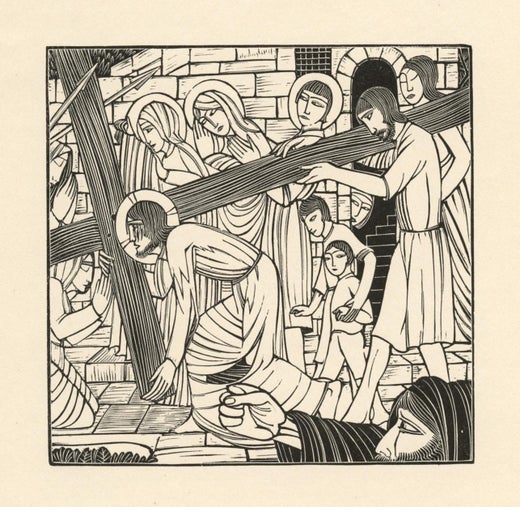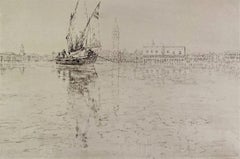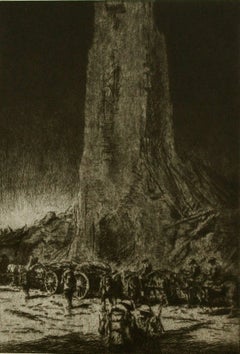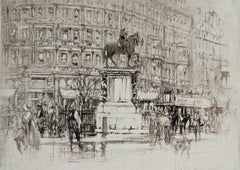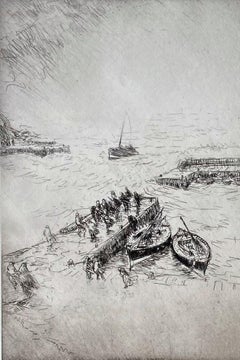Eric GillDaily Herald Order of Industrial Heroism.1923
1923
About the Item
- Creator:Eric Gill (1882 - 1940, British)
- Creation Year:1923
- Dimensions:Height: 16 in (40.64 cm)Width: 20 in (50.8 cm)Depth: 0.5 in (1.27 cm)
- Medium:
- Movement & Style:
- Period:
- Condition:
- Gallery Location:Storrs, CT
- Reference Number:1stDibs: LU33521748063
Eric Gill
Arthur Eric Rowton Gill ARA was an English sculptor, typeface designer and printmaker. Following Chichester Technical and Art School, Gill moved to London in 1900 to train with the ecclesiastical architect W.D. Caröe. Finding architecture somewhat pedestrian, he took stonemasonry lessons at Westminster Technical Institute and calligraphy lessons at the Central School of Arts and Crafts, coming under the influence of Edward Johnson, the designer of the London Underground's typeface. In 1903, he ceased his attempts to become an architect, instead of becoming a monumental mason, letter-cutter and calligrapher.
Based in Ditchling, Gill began direct carving of stone figures, the semi-abstract figures taking their influence from medieval statuary, mixed with influences from Classical statuary from the Greeks and Romans, with a little Post-Impressionism added in. Gill was offered major commissions from Westminster Cathedral for its Stations of the Cross (1914); a series of war memorials including the Grade II* memorial in Trumpington; three of the sculptures for Charles Holden's 1928 headquarters of London Underground at 55 Broadway, St James's; and a series of sculptures for the new 1932 Broadcasting House — the list continues. Never one to rest on his laurels, he was at the same time engaged in typographical adventures.
Gill had collaborated with Edward Johnson on the latter's initial thoughts on his London Transport typeface, but in 1925, Gill designed Perpetua on his own, and Gill Sans between 1927–30. For the Golden Cockerel Press, he created, in 1929, a bolder typeface to complement wood engravings. And of course, Gill was publishing decorated books. His 1929 Canterbury Tales was an epic work, with a whole series of beautiful wood engravings.
You May Also Like
1930s American Modern Figurative Prints
Engraving, Woodcut
1870s American Impressionist Landscape Prints
Engraving, Woodcut
1860s Realist Figurative Prints
Engraving, Woodcut
1850s Victorian Figurative Prints
Engraving, Woodcut
1960s American Modern Figurative Prints
Paper, Woodcut
Early 2000s Modern Figurative Prints
Woodcut
Early 2000s Modern Figurative Prints
Woodcut
Early 2000s Modern Figurative Prints
Woodcut
1960s Modern Landscape Prints
Woodcut
Early 2000s Modern Figurative Prints
Woodcut
More From This Seller
View All1920s Modern Landscape Prints
Drypoint, Etching
1920s American Modern Landscape Prints
Drypoint, Etching
Early 20th Century Modern Landscape Prints
Drypoint, Etching, Aquatint
1930s Modern Landscape Prints
Drypoint, Etching
Early 20th Century Modern Landscape Prints
Drypoint, Etching, Aquatint
20th Century American Modern Figurative Prints
Drypoint, Etching
